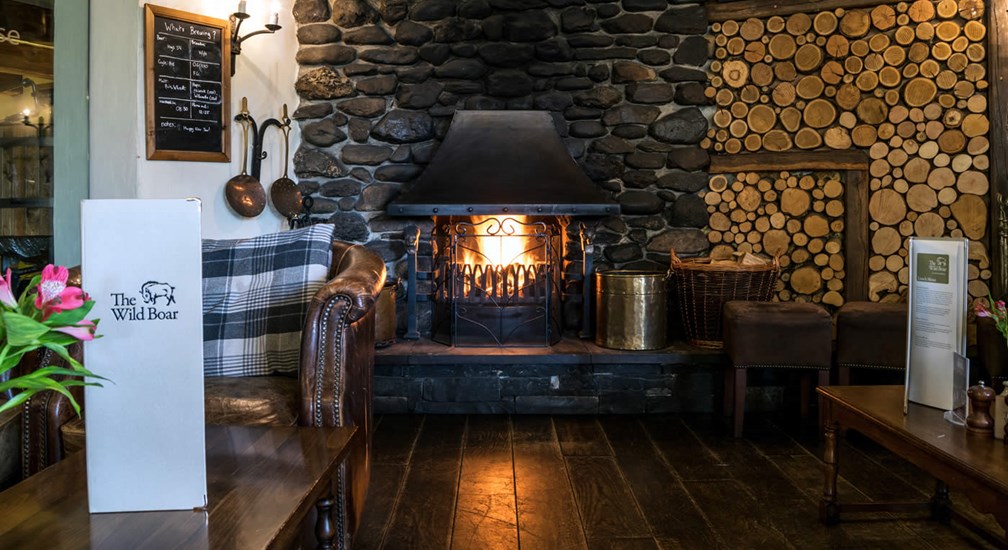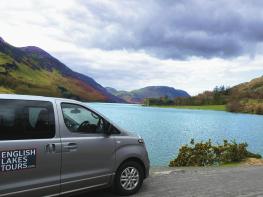The Coach House, situated in the beautiful Longsleddale Valley within the Lake District National…
Kendal's two castles

Visit two ancient castles, on opposite banks of the River Kent.
3 miles (4.8kms)
About the walk
Known as the ‘Auld Grey Town’, because of the colour of its predominantly limestone buildings, enterprising Kendal retains much of its original character. Until 1974 this was the administrative centre for the former county of Westmorland. Sited either side of the River Kent, its occupation stretches from Roman times to the present day and its varied stone buildings, nooks, crannies, yards and castles offer a rich historical tapestry. This walk visits two important strongholds located strategically on high ground either side of the river: Kendal Castle and Castle Howe.
Kendal Castle
Sited in a commanding position above the town and the River Kent, ruined Kendal Castle is quietly impressive and offers fine views in all directions. Kendal people may tell you that this was the birthplace of Catherine Parr, who became Henry VIII’s sixth and last wife in 1543. Although her grandfather, William Parr (d.1483), lies entombed in Kendal parish church, there is no clear evidence that Catherine ever set foot in Kendal, and the castle was probably already falling into decay by that time.
It is thought that Kendal Castle succeeded Castle Howe, sited on the opposite side of the river, sometime in the late 12th century. After the Norman barons had secured the kingdom; they required quarters with sufficient space to administer their feudal territories and so replaced their wooden motte and bailey castles with castles of stone. This happened here about 1220, with the construction of Kendal Castle starting while the motte and bailey Castle Howe was still in use. Work continued until 1280 by one of the early barons of Kendal, either Gilbert Fitzreinfrid or his son William de Lancaster. Today the ruins of Kendal Castle consist of a circular defensive wall and three towers plus a residential gatehouse surrounded by a partly filled ditch. The entrance path leads through the wall at the point where a gatehouse once stood. To the left are the largest standing remains, the house where the baron’s family lived, known as the Lyons Den, or Machell Tower. To the right stands the Northwest Tower, with a ‘dungeon room’ below, and garderobe (toilet), with free fall into the ditch/moat, above. Substantial new steps now lead up the tower, and another set allows you to view the ‘Manor House’, which was the main living quarters of the castle. The Parr family occupied the castle for four generations, from 1380 to 1486, when William Parr’s widow remarried and moved to Northamptonshire. The castle fell into ruin and much of the stone is thought to have been recycled for use in building works in the town below.
Walk directions
From the car park exit (Level 1) by the bus station, turn right down Blackhall Road to a pedestrian crossing near the river. Cross, then turn left to a footbridge. Cross, and turn left to follow the surfaced walkway through Gooseholme. At the road junction beyond the Church of St George, turn right down Castle Street. Pass the Castle Inn and continue up the hill to Castle Road on the right. Ascend Castle Road and go through a kissing gate on the right onto Castle Hill. Follow the broad path up the hill to the Kendal Castle ruins.
Go round the right (west) side of the castle ruins and soon fork right. Descend steeply to an iron kissing gate, and join a street. Go over a bridge, then drop down right, to the course of the old canal. Walk away from the bridge, and in a few paces turn left into a quiet street.
At the end go left a few paces to a crossing and a footbridge over the River Kent. Over the river turn left, downstream, and just before reaching the parish church turn right to pass between the church and Abbot Hall Art Gallery on a path lined with yew trees. Bear slightly left to emerge onto busy Kirkland Road by the impressive iron gates of the church. Turn right along the road to a crossing. Cross it, then turn right to cross Gillinggate and keep along the main road, now called Highgate. Take the next left up Captain French Lane for 300yds (274m), then turn right up Garth Heads. Follow this until steep steps ascend to the left. Climb to a terrace and a view out over Kendal. Cross the grass terrace towards the mound and its distinct bodkin-shaped obelisk. Climb the steps then spiral left. As the path levels, steps lead up right to the obelisk and the top of Castle Howe.
Return to the path and go right. Find a gap on the left and emerge on the road at the top of a steep hill. Descend the hill, which becomes Allhallows Lane, to the traffic lights and pedestrian crossing opposite the Town Hall. Turn left, escaping the traffic, along Stricklandgate. Take the second right down Market Place. The easiest way now is through the Westmorland Shopping Centre, but a more characterful route is to continue down the steep hill. Turn left on Stramongate and left again to return to the start.
Additional information
Pavements, surfaced and grassy paths with steps
Historic townscape and parkland
Parkland is popular with dog walkers, but busy roads through town
OS Explorer OL7 The English Lakes (SE)
Westmorland Shopping Centre car park, above Kendal bus station
In Westmorland Shopping Centre
WALKING IN SAFETY
Read our tips to look after yourself and the environment when following this walk.
Find out more
Also in the area
About the area
Discover Cumbria
Cumbria's rugged yet beautiful landscape is best known for the Lake District National Park that sits within its boundaries. It’s famous for Lake Windermere, England’s largest lake, and Derwent Water, ‘Queen of the English Lakes'. This beautiful countryside once inspired William Wordsworth and his home, Dove Cottage, in Grasmere is a popular museum. Another place of literary pilgrimage is Hill Top, home of Beatrix Potter, located near Windermere. Tom Kitten, Samuel Whiskers and Jemima Puddleduck were all created here.
Much of Cumbria is often overlooked in favour of the Lake Distirct. In the south, the Lune Valley remains as lovely as it was when Turner painted it. The coast is also a secret gem. With its wide cobbled streets, spacious green and views of the Solway Firth, Silloth is a fine Victorian seaside resort. Other towns along this coastline include Whitehaven, Workington and Maryport. Carlisle is well worth a look – once a Roman camp, its red-brick cathedral dates back to the early 12th century and its 11th-century castle was built by William Rufus.
Nearby stays
Restaurants and Pubs
Nearby experiences
Recommended things to do
Why choose Rated Trips?
Your trusted guide to rated places across the UK
The best coverage
Discover more than 15,000 professionally rated places to stay, eat and visit from across the UK and Ireland.
Quality assured
Choose a place to stay safe in the knowledge that it has been expertly assessed by trained assessors.
Plan your next trip
Search by location or the type of place you're visiting to find your next ideal holiday experience.
Travel inspiration
Read our articles, city guides and recommended things to do for inspiration. We're here to help you explore the UK.















